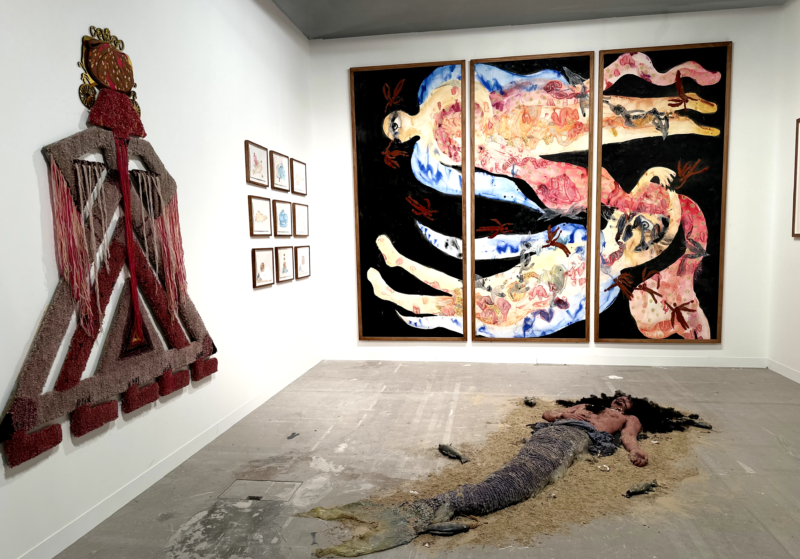Elen Levitt, the founder of ArtLevel, combines her experience in banking with her art management studies at Sotheby’s Institute to help clients create art collections that bring both personal satisfaction and financial rewards.
In an interview with Fine Art Shippers, she shared her journey into the art world and discussed her perspectives on wise art investment.
Founder of ArtLevel on Smart Investing in Art
You’ve had a remarkable journey from finance to art. What motivated you to transition from a top managerial position at a bank to the art world?
Elen Levitt: I worked in banking for nearly 17 years and did really well—lots of awards and recognition. But while I could handle the numbers, deep down I knew it wasn’t what I wanted to do in life. What I really loved was working with people. By the time my second child was born, I was going through a lot, including a divorce, and I started painting to find some joy and positivity. At some point, a friend saw my paintings and said, "Why don’t you exhibit them? I’m opening a clinic, and they’d look great there." Another friend, who owned a chain of beauty salons, jumped on the idea too. I wasn’t sure how I’d pull it off, but I decided to try. Later, I had the idea of bringing together other artists to showcase their work outside of galleries as well. I put out a call on Facebook, and the response was incredible—over 500 people replied!
The question then became how to communicate with them and structure their work. I created a chat group, and about 100 artists joined. I started to organize monthly exhibitions in beauty salons and other public spaces, which turned out to be a very successful project. However, it was taking a lot of time and effort, and although I managed to keep up, I began looking for ways to make it easier for myself. In 2018, I came up with the idea of launching the first-ever Telegram art gallery, which I did. The gallery worked as a chatbot showcasing photographs of artworks, with each having a QR code, letting viewers access the artwork's dedicated page.
How did you start organizing shows in gallery spaces?
It all began spontaneously. One day, while exploring a new space with my son, we stumbled upon an empty gallery. I needed a place to work on a large painting I was commissioned, so I asked if I could use it to paint. On a whim, I also asked if I could host an exhibition there, and to my surprise, they said yes. That’s how I started to organize gallery exhibitions. In these shows, I combined digital works with detailed, portrait-style art. At first, it was more of a personal, therapeutic process, but it quickly turned into a passion. I loved the idea of not just creating something but also seeing how art can engage with people on a deeper level. 
How did that project evolve into the art management company you established?
With my banking background, I wanted to connect the worlds of finance and art, showing that these two fields are not mutually exclusive. On the contrary, art can not only bring beauty and enjoyment but also become a profitable investment. I aimed to broaden society's perception of art and demonstrate that it can be accessible to everyone. Art gives a universal voice to both the artist and the collector (investor). That's how ArtLevel began—at the intersection of a personal mission and a profitable investment.
What is your main focus of work at ArtLevel?
I develop art investment strategies for individuals, corporations, and funds, helping them find an approach that best suits their goals and budgets. My company is based in Dubai, but I operate globally. I have partnerships with leading global logistics companies, and top-tier storage facilities in the US, Europe, and other regions, which allow me to work with galleries, museums, artists, and collectors all over the world. Recently, I’ve been expanding my focus to the MENA region, exploring opportunities with local artists and institutions. This year has been very successful in this regard. In 2024, we integrated Russian collectors into the Art Dubai and Art Abu Dhabi fairs and made significant progress in promoting MENA art through a series of partnerships. I also work with digital artists and will soon launch a new space for digital art in Dubai. This semi-spherical venue has the largest screen in the city and can host 500-600 people for various immersive events. This will be a unique opportunity and a significant boost for digital artists—the latest technical equipment will enable them to experiment and create impressive global projects. 
From your experience, what budget is needed to start building a collection for art investment purposes?
Budgets can range from $300,000 for contemporary art to over $50 million for masters like Monet, for example. It all depends on the focus of the collection. My contracts usually last at least a year, during which I plan acquisitions and oversee collection management.
How do you find artists you work with?
I am naturally curious and love exploring new things. I actively research artists through Instagram and other online resources, attend major art fairs and bienalles, follow leading art dealers like David Zwirner or Larry Gagosian who shape global demand. I also get insider insights from collectors and global partners. It all works together, training the eye and building a personal network.
What advice would you give to collectors looking to invest in art?
I suggest working with experts— they can assess their collection and break it down into general pieces, collectible works, and investment-grade art. The approach depends a lot on personal taste and budget. For instance, blue-chip art tends to offer stable, moderate returns, while contemporary art might have higher growth potential but comes with more risk.
Interview by Inna Logunova
Photo courtesy of ArtLevel
